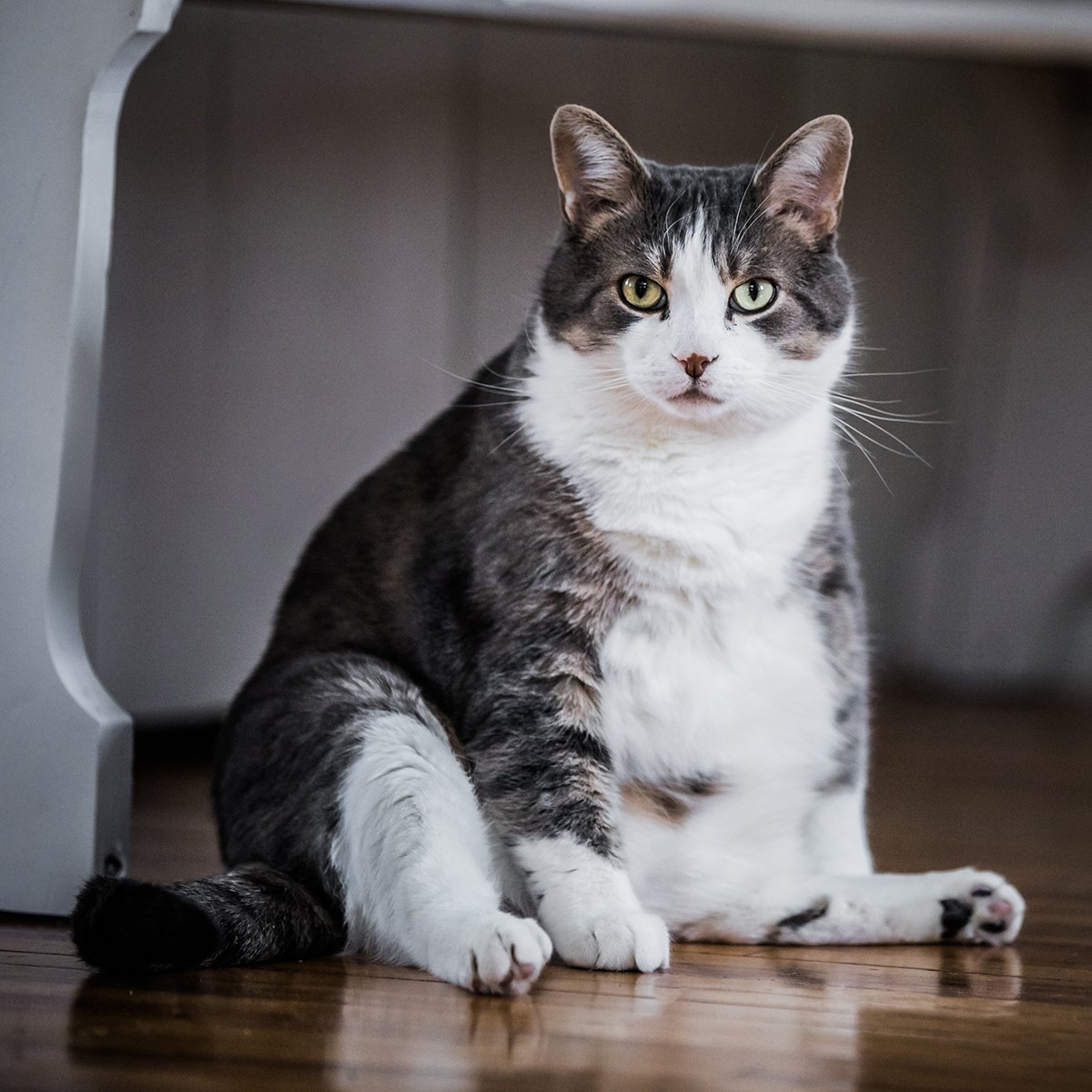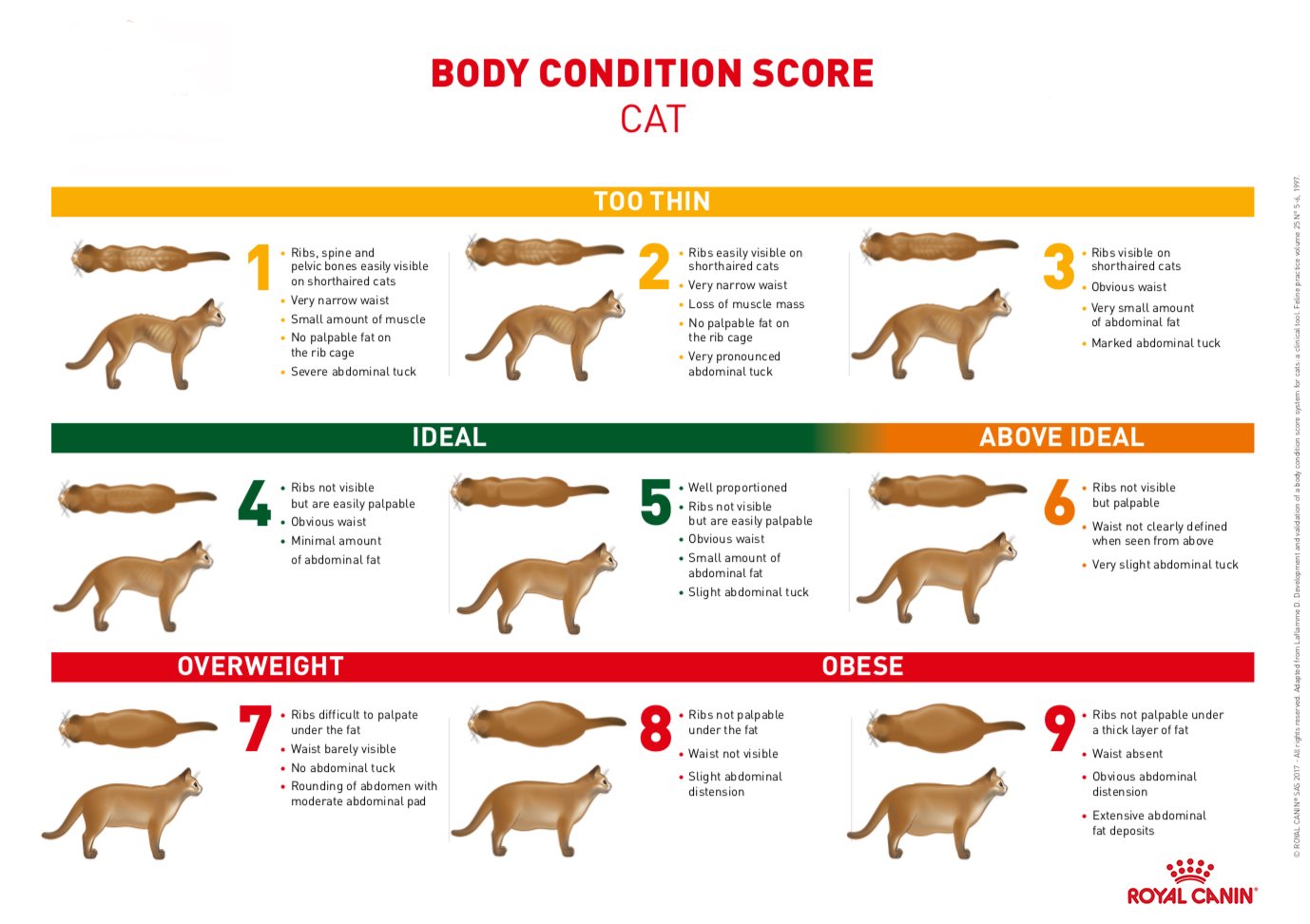Cat Obesity -- how to keep your cat at a healthy weight
A cat’s weight is an important subject to talk and think about. Obesity in cats can lead to numerous health complications, especially diabetes. According to the Morris Animal Foundation, 60% of cats are overweight or obese. According to the American Animal Hospital Association (AAHA), consequences of excess body fat in cats include kidney dysfunction, skin disorders, chronic inflammation, orthopedic disease, respiratory disorders, cancer and reduced life expectancy. We want to take some time to bring this feline health concern to your attention and provide some tools to empower you to help keep your cat’s weight within a healthy range.
What can you do?
First, determine if your cat is indeed overweight. If you’ve been into our clinic for one of our regular feline checkups, then you know we monitor your cat’s weight, determine a body condition score, and provide guidance for weight management. If you haven’t been in to see us lately, you can always schedule a routine checkup where we can weigh your cat and provide nutritional education. In the meantime, look at this chart below. Which body condition does your kitty look like? We know long haired cats can especially hide their body shape but do your best to identify where your cat falls on the chart.
Next, get a baseline weight. To weigh your cat at home, try these different methods:
1. With a regular bathroom scale: Pick up your cat and stand on the scale to determine your combined weight. Put your cat down and weigh yourself. Subtract your weight from Step 2 from your combined weight from Step 1.
2. With a digital luggage scale: All you need to do is put the cat in the carrier and use the digital luggage scales to measure the total weight. Then remove the cat and weigh the carrier on its own. Subtracting the lower figure from the higher figure will give you the weight of the cat.
Once you have a baseline weight measurement, you can better determine if your cat is overweight. Be sure to keep your cat’s breed and overall build in mind. Some cats are larger than others, and their numerical weight will reflect this. For example, it may be normal for a large Maine Coon cat to weigh over 12lbs., but for a smaller Domestic Shorthair cat, 12lbs. may be overweight. While numerical weight is a helpful gauge, a body condition score is what we use in our clinic to determine obesity. See the cat body condition chart above. A score of 5 is the ideal body condition score for a cat, with 1 being severely underweight and 9 being severely overweight. A cat at ideal weight will have an obvious waist when viewed from above, a slight abdominal tuck, and easily palpable ribs. Next review your cat’s diet and exercise routine.
Diet and Healthy Foods
It is appropriate and important to feed a nutritional product that has lower overall calorie density, yet maintains an appropriate nutrient balance. Start by keeping a food log for the next few days. Write down when your cat eats, what they eat, and how much they eat. Do you feed your cat every time they meow when you are in the kitchen or do you leave large bowls of food out all day?
Cummings Veterinary Medical Center at Tufts University recommends considering calories as opposed to food portions, emphasizing that "the actual amount of calories that your pet is eating and their weight and body condition score is going to be a better indicator of what your pet actually needs."
Here are some diet tips:
- The majority of your cat’s food should be wet. Wet food is higher in protein, which supports strong muscles and less fat mass. Wet food also helps cats to maintain a healthy water intake. Cats are obligate carnivores, which means they do not naturally eat many carbohydrates that are often found in dry cat food.
- If left to their own devices, many cats will opt for dry cat food as it is like junk food. It may take some strategic planning and will power on your part to limit your cat’s dry food and incorporate more wet food. Not all cats need a wet only diet, however. Some dry food can be beneficial to help maintain healthy teeth. Try feeding dry food as dental treats or limit the dry food to a small, measured amount instead of leaving it out all day.
- Depending on your cat’s age and overall health, there are many products on the market to choose from. Your Just Cats veterinarian can coach you on what will be best for your cat and create a specific diet plan if that is helpful. Bring your food log with you when you come or email it if you opt for a telemedicine appt. Just Cats doctors can also prescribe weight management or novel protein foods if necessary for your cat.
Increase Exercise and Movement
Exercise will also help reduce your cat’s weight by burning more calories than they take in. Aim to exercise your cat for at least twenty minutes a day. If you have a busy schedule and may not have the time to play with your cat, try these tips:
- While cooking dinner or another task, try tossing a cat toy down a hall or into another room.
- A laser light can simulate a small bug running across the floor and is easy to do while scrolling your Instagram feed. Just be mindful not to point the laser directly at your cat.
- Incorporate climbing with a step ladder you take out of the closet from time to time, or add shelves on a wall strategically placed to create a safe “cat climbing wall.” Cat trees and wall shelves allow access to vertical space – your cat’s climbing and jumping means exercise without them even realizing it.
- Bring something new into their environment each week like a brown bag, box, or cork.
- Change the way you feed your cat. Food puzzles are mentally enriching and will slow down the pace at which your cat eats. A food puzzle that requires physical movement in order to release food also means burning more calories.
Any increased exercise will lead to increased calorie expenditure, promoting weight loss in your cat. And remember, losing weight takes time and mindfulness so be kind to your cat and yourself. The safest way for cats to lose weight is slow and steady weight loss. We are aiming for weight loss of about 4-6% of their total body weight per month. We’d love to hear your progress!
Credit: Cat Condition Score Chart courtesy of Royal Canin / Cat photo: Envato


